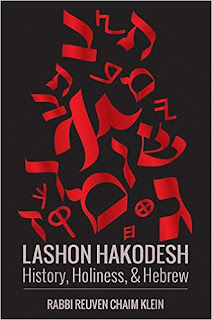Reference Guide to the Talmud
 Reference Guide to
the Talmud
Reference Guide to
the TalmudRabbi Adin Steinsaltz
Koren / 500 pages
Wow. When I received the
Reference Guide to the Talmud, I promptly rescheduled my plans for the day, and
took several hours to go through the book cover to cover. It is overflowing
with so many important facts, terms, concepts, and instructions, that are vital to properly understanding of Talmud. The best way to give it over is simply to tell you
what it contains!
Following the Introduction of the book, which discusses the development
of the Talmud, chapter 1, “Life in the Talmudic Period”, is about the history
of Jewish life in the Land of Israel and Babylonia during the Talmudic era. Very, very, well done.
Chapter 2,
“Jewish Communities”, discusses the Jewish communities of Eretz Yisrael and
Babylonia during the Talmudic era. For example, one will learn about Lod, Yavneh and
Jerusalem in Israel, and Pumbedita, Sura, and Hutzal in Babylonia.
Chapter 3, “Generations of Tanna’im and Amora’im”, contains a
listing of all the major Tanaim and Amoraim, and the chronological order in which
they lived.
Chapter 4, “Tractates of the Mishna and the Talmud”,
discusses all the tractates of the Talmud, including the “minor tractates”
giving a summary of the major topics that each tractate deals with.
Chapter 5, “The Layout of a Talmud Page”, is all about the
layout of a page of Talmud, along with a very thorough explanation of all the commentaries
and cross reference guides found on a page of Talmud. The chapter then moves on to an explanation
of all the other commentaries that are found in the back of most editions of
the Talmud. Great biographical information there.
Chapter 6, “Aramaic”, is all about the Aramaic language, including a conjugation table. Of extra interest is the relationship between
Hebrew and Aramaic, and how letters are sometime interchanged from one language
to the other. For example, “gold” is “zahav” in Hebrew and “D’hav” in Aramaic,
as “zayin” and “dalet” are often interchangeable.
Chapter 7, “Glossary of Common Verb Forms”, includes all the
common verbs in Talmudic discourse. Everything is translated and explained. The same is true for chapter 8, a “Glossary of Basic Words.”
Chapter 9, “Guidelines for Talmud Study”, is a great
primer for beginners on how to approach the study of Talmud. It is slightly academic
(as opposed to “yeshivish”) in style and presentation.
Chapter 10, “Mishnaic Methodology”, contains several
dozen terms and concepts for deciphering the Mishna (and Talmud).
Chapter 11, “Talmudic Terminology”, contains about 75 pages of
the most common Talmudic phrases and terms along with their definition, and an explanation.
Chapter 12, “Principles of Talmud Hermeneutics” was especially
interesting. Every morning we read about “Rabbi Yishmael’s Thirteen Principles of
Interpretation”. This chapter goes through each of them, and gives examples. Other hermeneutic principles are discussed, as well.
Chapter 13, “Principles Governing Halakhic Decision Making”, is a short chapter on how halacha is decided in the Talmud, and in accordance
with whose opinion. For example, the halacha is in accordance with Rabbi
Yehoshua in a dispute with Rabbi Eliezer, and in disputes between Rav and
Shmuel, we follow Rav in ritual law, and Shmuel in civil law.
Chapter 14, “Halakhic Concepts and Terms”, is about 250
pages of all the halachic terms that come up in each and every tractate.
Chapter 15, “Talmudic Weights and Measures”, needs no elaboration.
Whether its units of time, weight, or distance, it’s all there.
Chapter 16, “Rashi Script”, is a short discussion on the
Rashi style of script that is used in a variety of places.
Chapter 17, “Plan of the Temple”, contains a diagram, with an
explanation of every part of the Temple complex.
Chapter 18, “Abbreviations”, contains the primary
abbreviations and acronyms that are used in the Talmud and rabbinic literature.
This book is suitable for Talmudists of all backgrounds
and levels. For the beginner, it is eye opening and instructive, and for the more
advanced, all the common terms and phrases are organized, arranged, and clearly articulated.
Indeed, there are a number of new features in this second edition, such as topical
organization, a reorganized halacha section, and an alphabetical Hebrew index,
among others.
As I said at first, “Wow!”

